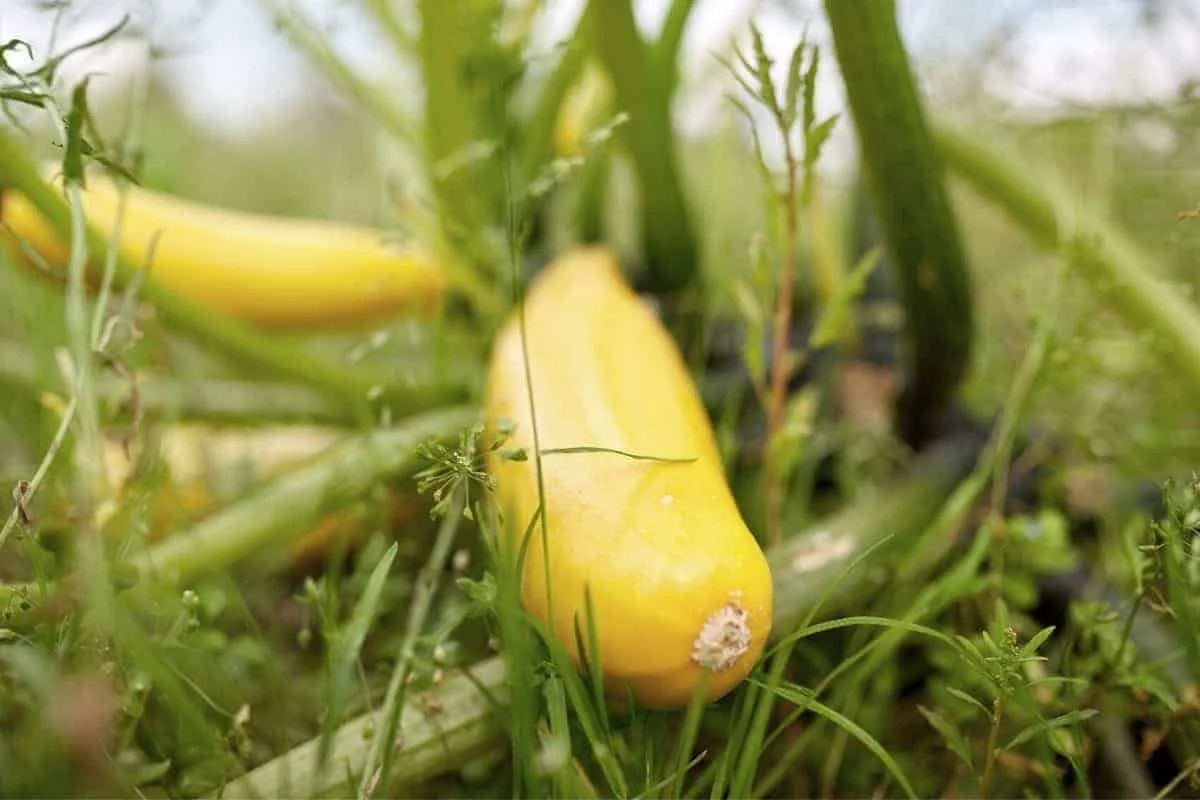How to Grow Squash: Tips and Tricks for Beginners
Squash... We love summer squash and want to teach you how to grow summer squash and even store it!
I never realized just how many squashes can come off of one plant...
And, actually, there are many types of squash that you can grow.
We typically plant yellow squash and zucchini. They are a very versatile vegetable that you can grill, bake, saute, and pickle.
Yes, we said pickle, don't knock it till you try it.
Which Squash Should You Grow?
Like many vegetables... this will be a preference type of thing.
Don't grow a veggie that you don't really enjoy eating (unless someone else enjoys it).
That just wastes precious space in your garden that could be used to grow your family's favorites.
Types of Different Squash:
yellow squash
zucchini
spaghetti squash
acorn squash
butternut squash
pumpkin
kabocha squash
How to Grow Squash (different ways)
Squash can be relatively easy to plant, but you want to figure out what's going to work for you and your family.
Are you going to plant from seed or buy a plant from your local co-op, Lowes or Home Depot?
Then, are you going to plant them in the ground or in a container?
These answers will help you figure out how best to garden and what to look for as far as potential issues.
Related Post: Growing Cucumbers: Top Tips to Grow Plenty of Cucumbers
Tips for Maximizing Your Squash Harvest
Last but certainly not least... here are our best tips for maximizing your squash harvest this year!
1. Seeding and Soil
Unlike tomatoes, summer squash does best directly seeded into the hole. It is best to have them in rows 1 inch deep, 3-5 feet apart with 2-3 plants per hole.
Compost is your friend. A few handfuls in each hole will add nutrients for each plant. This process is especially crucial if you garden in the same spot each year.
Like all other summer crops, the dirt needs to be warm, and the threat of frost has passed. The soil needs to be approximately 60 degrees.
If you are using a greenhouse or in your home, you will need to start the plants between 2 and 4 weeks before starting them in the garden.
Pro tip: want an early start? When the soil temperature is not 60 or above, warm the soil with a black plastic tarp. We have used this trick for years. ( Shhh don't tell the neighbors why our vegetables are ready earlier than theirs.)
When transplanting, be gentle with the roots, so you don't damage them. You do not want the roots to become root-bound.
After each plant is started, put a handful or two around the base of the plant. When it rains, your compost will add nutrients to each plant.
Lastly, add some chopped leaves after each plant is 6 to 8 inches tall. We cover each row with leaves. The Leaves will keep the soil moist on dry days and add heat protection during July and August.
Learn how to build a Family Garden with Melissa K. Norris.
2. Help the pollinators
After your squash starts to flower, the bees, butterflies, and other pollinators may have a hard time pollinating your plants. If you only have a few plants, you may have to hand pollinate each plant.
Grab a few make stamen pollinate the female pistol. You can break off the male stamen and rub it on the pistol. This will also work if you want to try your hand at cross-pollinating plants such as daylilies.
Pro Tips: Hand-Pollination
Pollinate early in the morning.
Remove the stamen, gently pull back the petals and rub the stamen against the pistil.
You can use a Q-tip to assist in this process.
4. Check Squash Daily
Squash plants are extremely susceptible to pests and diseases, especially if they are in pots. Last year we had problems with every plant.
Check under each leaf for squash bug eggs and adults remove with extreme prejudice by hand.
If powdery mildew is present, pick and dispose of the affected leaf. (Do not diseased leaves in compost. This stuff is precious and does not need to be tainted) Spray remaining leaves with Neem Oil. (dilute according to the directions on the bottle) once a week until no new powdery mildew appears.
If a plant is severely diseased, pull, and discard the whole plant, it will not produce well. Again do not put this in the compost pile.
Spray bug-infested plants with a mixture of Dawn dish- soap and water. Be sure to rinse the plant after the bugs are dead. If you do not clean the plant, it could become damaged.
5. Harvest Often
Squash, zucchini, and cucumbers should be harvested quickly and often.
You will need to check daily to make sure you are not missing anything. Use garden scissors or a sharp knife to cut through the steam, not the vine. We use an old kitchen knife; my Great Grandmother taught me this little tip.
Harvest when they are about 4-6 inches long. Any longer, they become woody. If you miss some and they become huge, you can compost it or feed it to your livestock. The pigs do not make a fuss about eating them.



